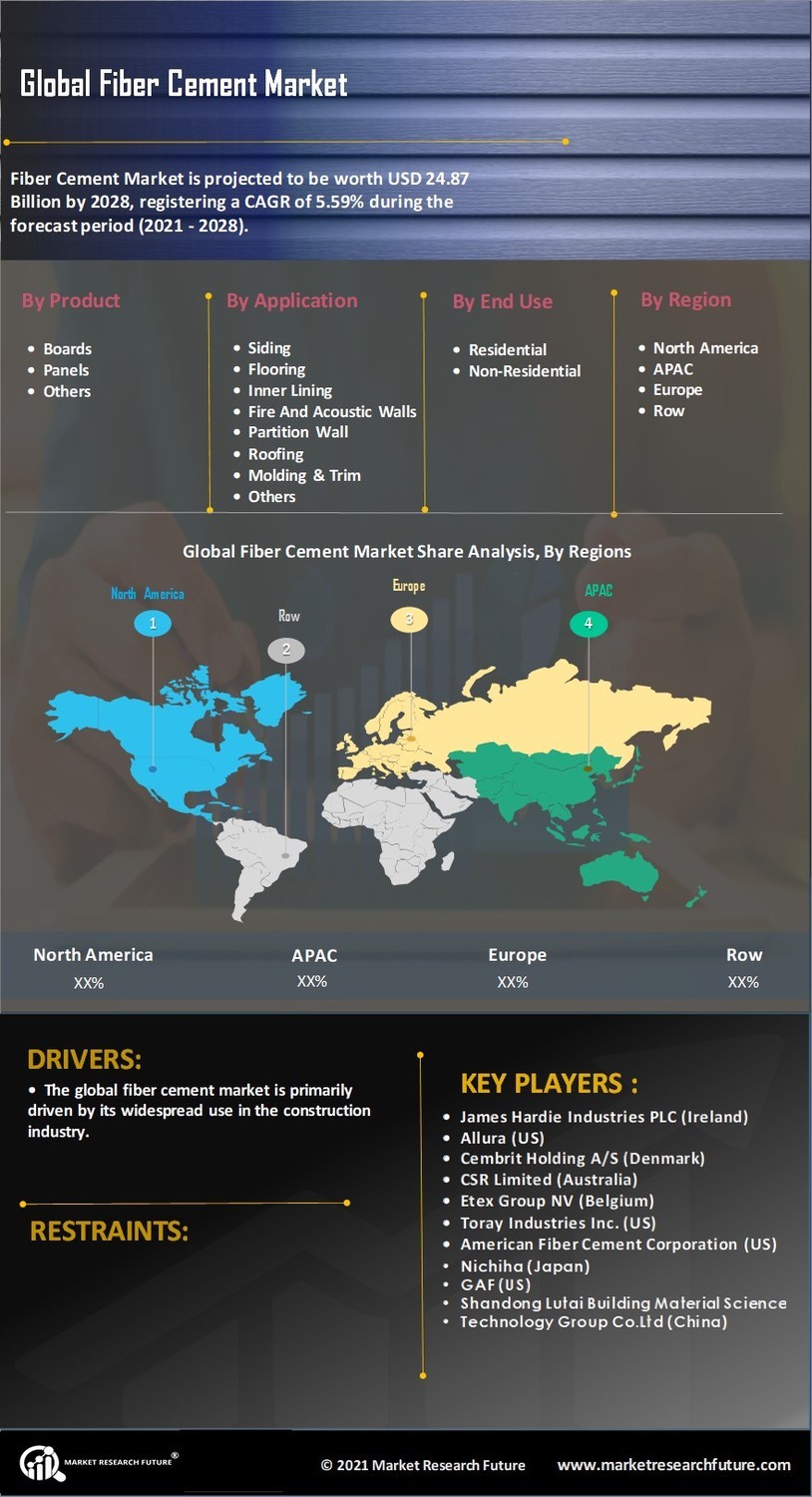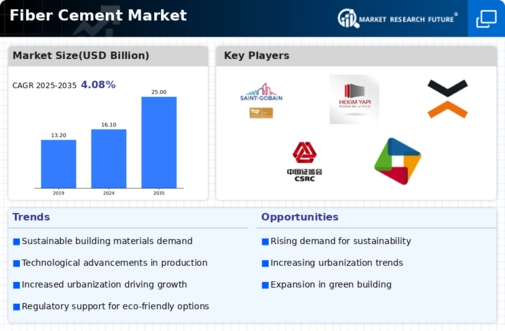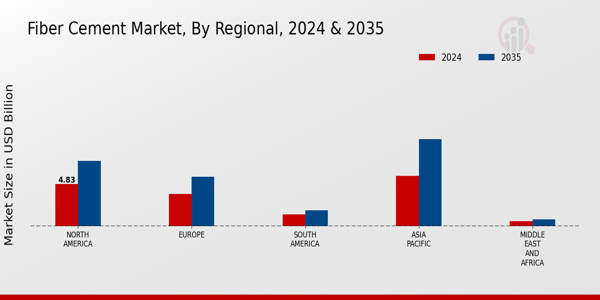The Fiber Cement Market is characterized by a dynamic landscape shaped by evolving consumer preferences, technological advancements, and stringent regulatory frameworks. As the demand for sustainable and durable building materials continues to grow, several key players have emerged, each vying for market share through innovative product offerings and strategic partnerships.
This competitive landscape is heavily influenced by factors such as geographic diversification, product development capabilities, and established distribution networks.
Companies are leveraging their strengths to improve their market positions, focusing on enhancing performance characteristics and expanding their product lines to cater to the diverse needs of the construction industry.
Saint-Gobain has established itself as a formidable player in the Fiber Cement Market, thanks to its extensive experience, strong brand reputation, and innovative approach to product development. The company benefits from a significant global presence that enables it to capitalize on regional opportunities and market demands.
Its strengths lie in a robust portfolio that includes a variety of fiber cement products designed for various applications, ensuring versatile solutions for architects, builders, and contractors.
Saint-Gobain's commitment to sustainable practices and high-quality manufacturing processes further enhances its competitive edge, allowing it to meet the increasing consumer demand for eco-friendly construction materials.
Additionally, the company continuously invests in research and development to innovate and adapt its product offerings, thereby addressing emerging trends in the construction sector.
American Fiber Cement serves as another vital competitor in the Fiber Cement Market, focusing on delivering high-performance fiber cement products tailored for residential and commercial applications.
The company possesses a strong market presence bolstered by its commitment to quality and reliability, which resonates well with its clientele. Key products include fiber cement siding, roofing, and panels, which are known for their durability, aesthetic appeal, and resistance to environmental stresses.
American Fiber Cement emphasizes innovation and sustainability in its production processes and has engaged in strategic mergers and acquisitions to enhance its capabilities and expand its reach within the global marketplace.
By strategically aligning itself with industry trends and customer demands, American Fiber Cement aims to maintain its competitive advantage and continue its growth trajectory in the globally integrated fiber cement sector.

















Leave a Comment